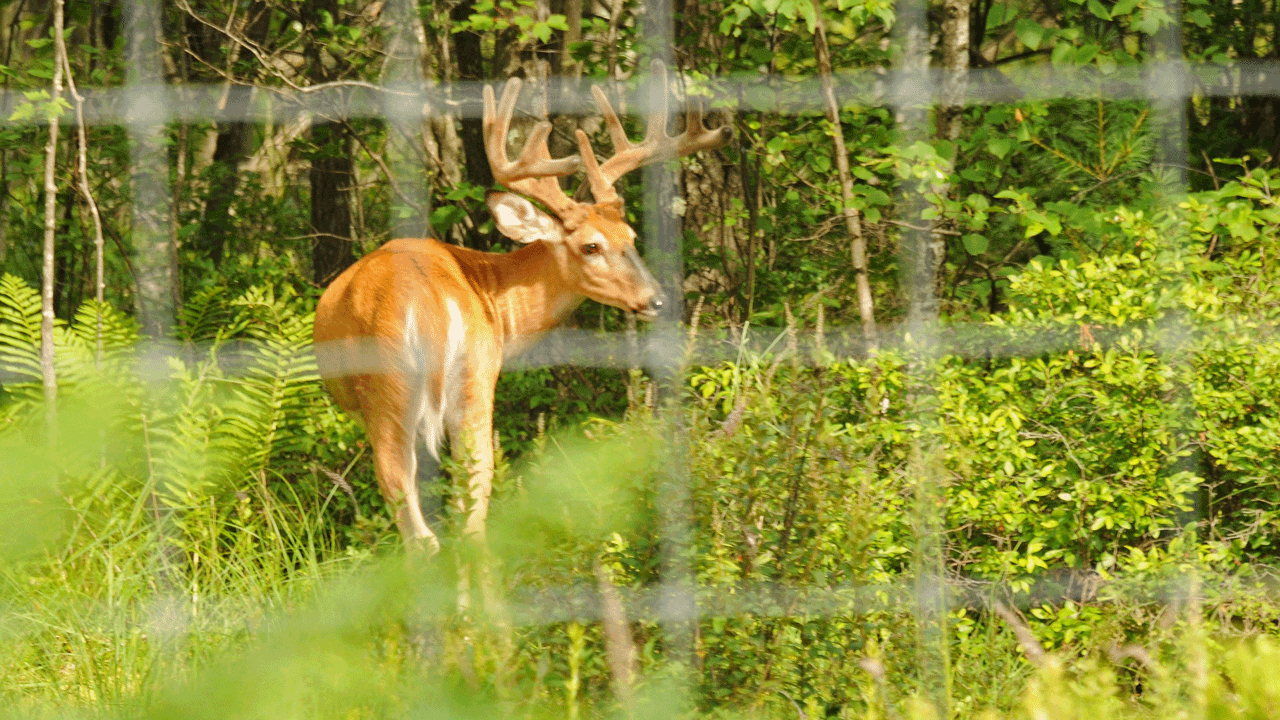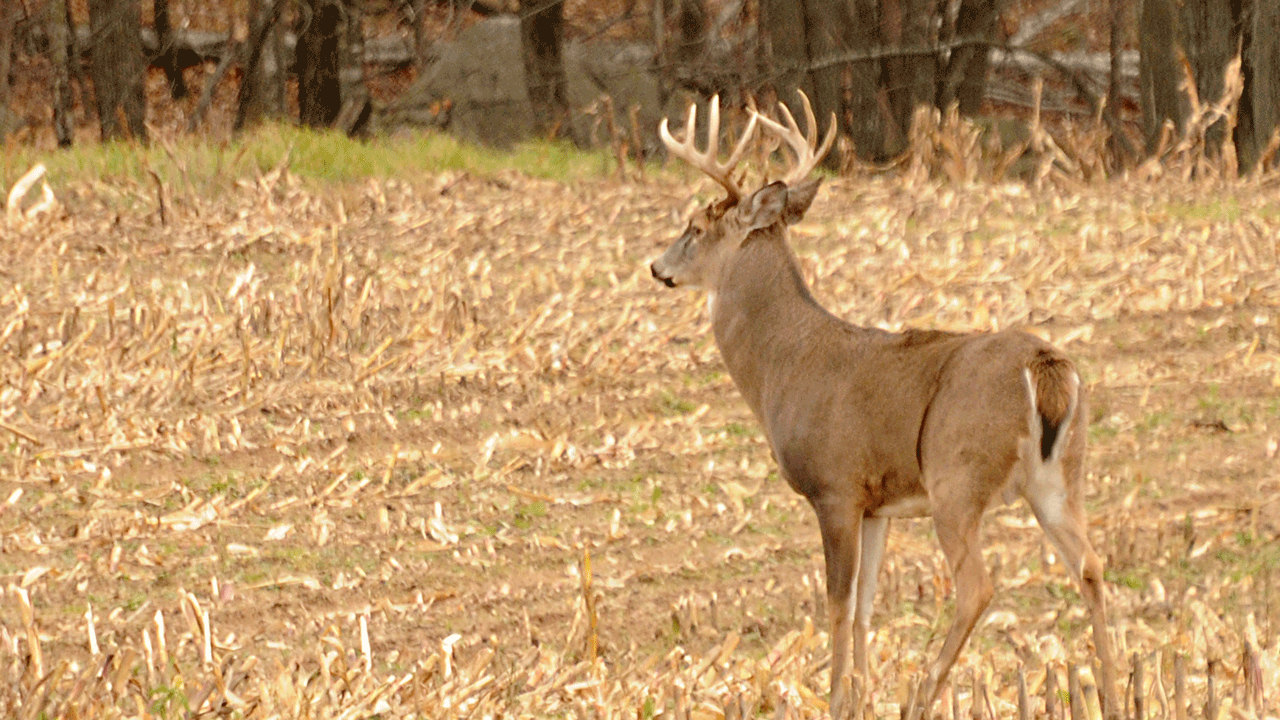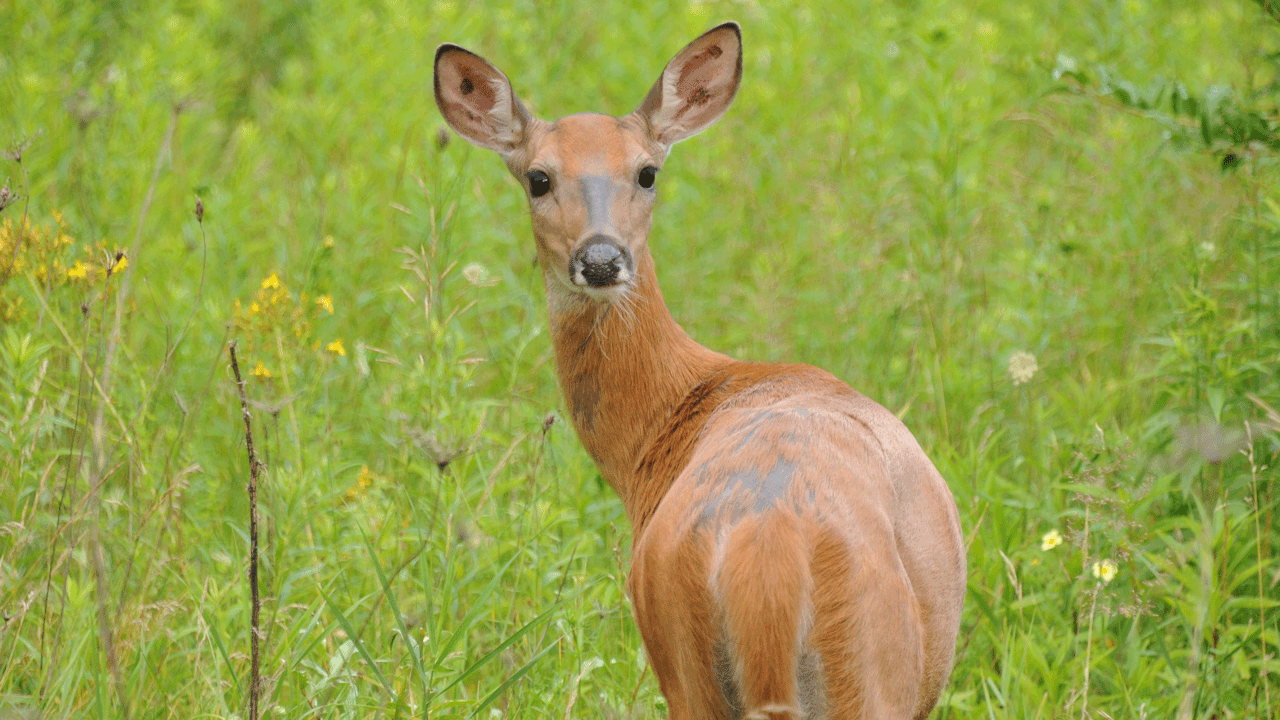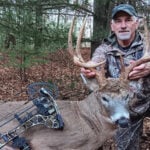A central Wisconsin captive-deer shooting preserve that discovered its first two cases of chronic wasting disease in October 2017 found 10 more CWD cases last fall, with 11 of the deer coming from a breeding facility in Iowa County – Wisconsin’s most infected county.
Hunt’s End Deer Ranch near Ogdensburg, Wisconsin, is one of 376 fenced deer farms in the state, according to Wisconsin’s Department of Agriculture, Trade and Consumer Protection. Hunt’s End bought the diseased deer from Windy Ridge Whitetails, a 15-acre, 110-deer breeding facility south of Mineral Point in Iowa County. Of Wisconsin’s 4,178 CWD cases in wild deer, 2,261 (54 percent) are in Iowa County. Wisconsin has documented more CWD cases than any other state in the nation.
The 12th diseased deer came from a breeding farm in Pennsylvania’s Lancaster County. The deer-breeding facility is now under quarantine for CWD after DNA tests confirmed it came from the Pennsylvania breeding pen, which reported a second CWD-infected deer in February.

Of 12 CWD-infected deer found on one central Wisconsin deer far, 11 came from a breeding pen in southern Wisconsin, and one came from a Pennsylvania breeding pen.
Since Wisconsin discovered CWD in three wild deer shot during the November 2001 gun season, CWD has been detected on 18 Wisconsin deer farms, of which 11 were “depopulated.” DATCP has identified 242 CWD cases in captive facilities the past 16 years.
Wisconsin’s worst site remains the former Buckhorn Flats Game Farm near Almond in Portage County, where 80 deer tested positive for this always-fatal disease from 2002 to 2006. When the U.S. Department of Agriculture shot out the 70-acre pen in January 2006, 60 of the remaining 76 deer carried CWD, a nearly 80 percent infection rate.
Wisconsin’s Department of Natural Resources bought the heavily contaminated site for $465,000 in 2011, and has kept it fenced and deer-free since.

Wisconsin has documented more CWD cases than any other state in the nation.
The last time Wisconsin’s DATCP exterminated a captive herd was November 2015, when it killed 228 deer at Fairchild Whitetails, a 10-acre breeding facility in Eau Claire County, and paid its owner, Richard Vojtik, $298,770 in compensation. Tests revealed 34 of those deer carried CWD (15 percent), but two bucks had escaped earlier. Those bucks roamed five months before being shot and tested. They, too, had CWD.
Both operations were outside the endemic CWD region in southern Wisconsin; Buckhorn Flats by about 60 miles and Fairchild Whitetails by about 120. Wisconsin’s four most active CWD outbreaks on deer farms are north of U.S. Highway 10, and farther away from the endemic region – basically the DNR’s Southern Farmlands district – which had 584 CWD cases 2017-18 and 4,148 since 2001.
Those businesses are:
— Wilderness Whitetails, near Eland in Marathon County: 68 CWD cases, including 43 in 2017-18. DATCP first reported CWD there in December 2013 in a 5-year-old buck shot by a facility client. The operation also found three cases in 2014, nine in 2015 and 12 in 2016. The preserve held about 310 deer in its 351-acre pen last summer. Since beginning tests in 2002, the facility tested 373 deer before finding its first case 11 years later.
— Hunt’s End, Waupaca County: 12 cases, all in 2017-18. The owners, Dusty and Mandy Reid, didn’t detect CWD on the 84-acre shooting facility until two 4-year-old bucks tested positive last fall. DATCP announced those cases Oct. 20, and disclosed 10 additional cases in response to an open-records request in January.
Both Oct. 20 bucks originated from Windy Ridge Whitetails. Nine other bucks from Windy Ridge, owned by Steven and Marsha Bertram, tested positive for CWD after being shot by Hunt’s End clients. DATCP records covering the past five years showed Hunt’s End acquired 31 deer from Windy Ridge, which also sent a combined 67 whitetails to nine other Wisconsin deer farms during that period.
Paul McGraw, DATCP’s state veterinarian and administrator in animal health, quarantined three Hunt’s End properties Oct. 20, but let its owners, continue selling hunts because “properly handled dead animals leaving the premises do not pose a disease risk.” McGraw also quarantined Windy Ridge, but the specifications let the business move more deer to the Waupaca shooting facility.
It made two more shipments to Hunt’s End, the last occurring Nov. 13.
— Apple Creek Whitetails, Oconto County: 11 cases. Since discovering CWD in September 2016 in an 18-month-old doe killed inside the facility near Gillett, DATCP has identified 10 more cases, including three in 2017-18. The preserve held about 1,850 deer on 1,363 acres, and tested 466 in 2016. After first testing for CWD in 2009, the business processed 1,192 deer before finding its first case 18 months ago.
— Three Lakes Trophy Ranch, Oneida County: Nine cases. Since discovering CWD in December 2015 in a 3-year-old buck at Three Lakes, DATCP has identified eight more cases, including two in 2017-18. The preserve held about 545 whitetails on 570 acres.

Wisconsin has confirmed 4,178 cases of CWD in wild deer since 2001.
Although Hunt’s End outbreak traces to Iowa County deer, Windy Ridge Whitetails sent even more deer, 42, to Vojtik’s American Adventures Ranch near Fairchild with no documented problems. DATCP reports no CWD cases there, and Vojtik, who also owned the 10-acre Fairchild Whitetails breeding facility, said he hasn’t bought Windy Ridge deer the past two years. Vojtik said in late February that he and his clients shoot out his enclosure’s herd of about 200 deer each year to reduce CWD risks. And because he’s not in DATCP’s herd-status program, he must only test 50 percent of deer dying there.
Meanwhile, Wilderness Whitetails tests all of its dead deer. It leads the state with 68 CWD cases, even though it has maintained a “closed herd” since opening its Eland facility in 2004, said its owner, Greg Flees, when reached Wednesday. Flees said all deer in the 351-acre facility were born there or came from his family’s Portage County breeding pen, which began in the 1970s and has never had CWD.
Flees said the jump from 12 CWD cases in 2016 to 43 cases in 2017 is no mystery or surprise. “We shot more deer to lower our densities, so we found more CWD,” he said. He thinks CWD was in the facility’s soils when they enclosed it with an 8-foot-high fence 14 years ago, or it arrived in alfalfa bales brought in for feed.
Perhaps the bigger mystery is why DATCP allows any deer from Iowa County to be shipped anywhere. Windy Ridge Whitetails is one of eight captive-deer facilities in CWD-infected counties – Sauk, Dane, Iowa, Rock, Walworth and Richland – enrolled in DATCP’s herd-status program, which allows deer transfers if facilities follow specified guidelines.
That won’t change soon, either. In a letter Jan. 30 responding to an open-records request, Paul Dedinsky, DATCP’s chief legal counsel, wrote, “The Department is not proposing any rule changes to prohibit movement from CWD endemic areas.”

 By
By 



